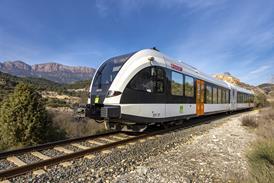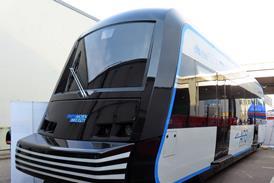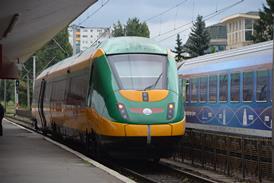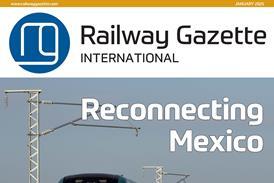INTRO: TGV services running at 350 km/h could one day link Paris and Bordeaux in just 2 hours, but more research is needed into braking, noise and maintenance costs
FRENCH National Railways is intensifying its efforts to develop commercial services running at a maximum speed of 350 km/h. According to SNCF’s Head of Research Philippe Renard, three areas need further investigation: braking, noise and the cost of maintenance.
Speaking in Bordeaux on March 24, at an event commemorating the 331 km/h world speed record attained 50 years earlier, Renard said that ’running at 350 km/h is not really a problem for the rolling stock’. The necessary design work was carried out several years ago, and traction motors are sufficiently powerful. Much more of an issue is how to brake a train running at very high speed within a reasonable distance - when TGV Set 325 attained 515·3 km/h on May 18 1990, it took 60 km to bring the train to a halt.
’The performance of disc brakes is almost at its limits’, said Renard, revealing that SNCF is now re-examining the use of eddy-current rail brakes. These were tested extensively during the 1970s when a railcar dubbed Zébulon was used as a testbed for TGV components. At the time SNCF concluded that there were too many problems, not least with rails heating up after brake applications by successive trains.
Experience with eddy-current rail brakes in Europe is limited to German Railway’s ICE3 trainsets, and while these are now used successfully in Germany, problems arose during trials in Belgium (RG 4.05 p179).
Noise remains the second critical issue. SNCF’s target is to develop a train generating no more noise at 350 km/h than a TGV Duplex at 300 km/h. Aerodynamic noise dominates in this speed range, and SNCF says bogie shrouds will be needed - these have been tested on a TGV set in the past.
The third area for attention is maintenance, with the focus firmly on the infrastructure. More intensive maintenance will be needed to maintain track to the higher standards required for daily operation at 350 km/h, with some issues remaining unresolved so far. Flying ballast is one example, with DB’s ICE3 sets affected at 300 km/h. Wind tunnel tests are being carried out to determine ways of controlling the problem.
Both track and overhead line equipment on TGV Méditerranée and TGV Est Européen, currently under construction, are designed to permit operation at 350 km/h, although tension of the contact wire would need to be increased slightly.
Transverse stability is another area for investigation, as is the ability to use the internet at 350 km/h. High-performance communications between train and wayside installations will in future almost certainly rely on satellites.
The higher cost of running at 350 km/h remains an issue for debate. Renard says it is ’not needed for today’s market’, but that it will be in the future. TGV Est services will run at 320 km/h and TGV Mediterranée has demonstrated that a 3h city-to-city journey time can capture 60% to 70% of the rail-air market. SNCF contends that a 50:50 share is achievable with a 4h journey time.
SNCF envisages that a 350 km/h maximum speed would give access to new markets, with Paris - Bordeaux taking 2h instead of the current 3h, and Paris - Toulouse possible in 3h. More significantly, shorter journey times could make rail more attractive for journeys from France to some cities in Spain, Italy and Germany.




















